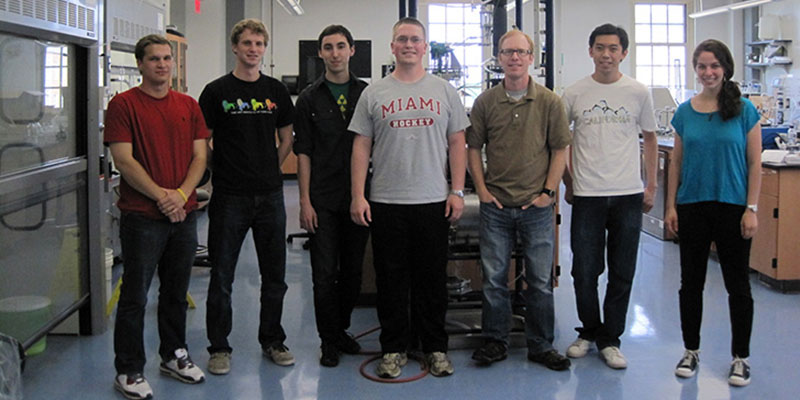

Research makes science fiction reality
“The Trekkies I’ve worked with,” says assistant professor of chemical and paper engineering Jason Berberich, “have always wanted to answer that question, ‘How do we build a tricorder?’”
As a biomedical engineer specializing in proteins, and the former director of development and manager of research for Agentase, a company now owned by FLIR Systems, Berberich helped develop and commercialize a number of products using enzymes, proteins that initiate or accelerate chemical reactions.
He thinks enzymes might also be the key to bringing tricorder technology to life. “I’ll play with any protein,” says Berberich. “It’s fun.”
Because enzymes are highly specific, they can be engineered to act on particular targets, leaving other materials in the surrounding environment entirely unaffected. Laundry detergents, for example, contain enzymes that attack stain-causing fats but – unlike harsh bleaches – do not damage underlying clothing fibers.
Certain enzymes target substances that could make them useful for detecting certain medical conditions, like high blood sugar. Berberich envisions engineering nanomaterials to carry these enzymes throughout the human body. Once they reach their targets, the enzymes would then broadcast information to an external tricorder-like device, which would convert the raw data into a form meaningful to physicians and their patients.
Similar technology can be used for other applications as well. FLIR Systems recently awarded Berberich a $50,000 grant to support his work on a treatment for exposure to chemical warfare agents.
“We can introduce proteins into the body that circulate around, and if a soldier’s out in a battle zone or a civilian gets exposed to chemical warfare agents, these proteins could eat up those nerve agents before they would kill,” explains Berberich.
Those familiar with Star Trek know Dr. McCoy’s “Dammit, Jim” meme. “Dammit, Jim,” McCoy says to Captain Kirk, “I’m a doctor, not an engineer!” If Jason Berberich were to join Kirk’s crew, he might say, “Dammit, Jim, I’m an engineer, not a doctor.” But that wouldn’t change the fact that his work still saves lives.
Written by Heather Johnston, office for advancement of research and scholarship, johnsthb@miamioh.edu
